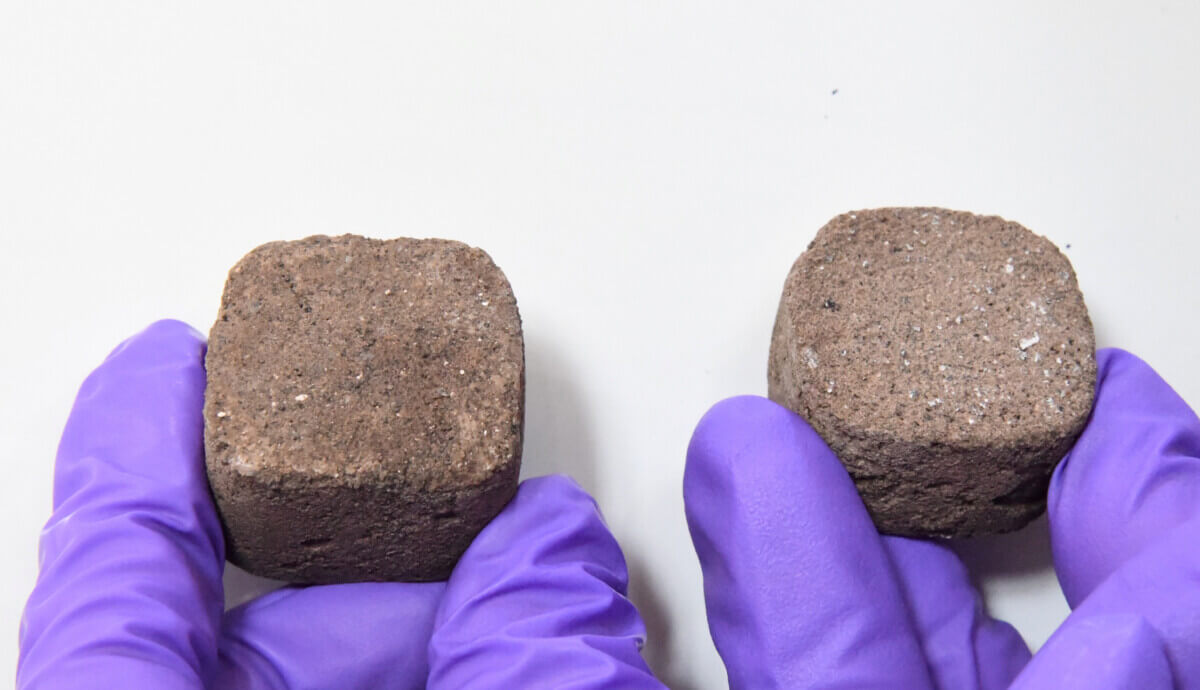
Space bricks. (Credit: Indian Space Research Organization)
BENGALURU, India —Building settlements on Mars may literally start in the bathroom! A new study is revealing how scientists are creating “space bricks” by mixing Martian soil with several substances — including a compound humans have in their urine.
Scientists made the bricks by mixing dust with urea, bacteria, guar gum, and nickel chloride with soil. From there, builders can pour the slurry into molds of any shape. Over a few days, the bacteria converts the urea into calcium carbonate crystals.
These crystals, as well as biopolymers the bacteria secretes, act as cement that holds the soil particles together. The new bricks, developed by researchers from the Indian Institute of Science, are less porous than others which researchers have tried to use to make Martian bricks. Bacteria can seep deep into the bricks’ pore spaces, while using their proteins to bind particles together, making them less porous and creating stronger bricks.
The new method can make complex shapes of brick, unlike a previous method the team used to try and make bricks from the Moon’s soil. That project ended up producing bricks that could only be cylindrical.
To begin with, the bacteria did not grow at all because soil on Mars is rich in iron, which is toxic for many organisms. Nickel chloride was the key ingredient that unlocked the process and made the soil hospitable for bacteria.
Environmental challenges await on Mars
The group now plans to investigate how Mars’ atmosphere and low gravity will affect the strength of space bricks. The Martian atmosphere is 100 times thinner than the Earth’s and is 95 percent carbon dioxide, which could significantly stunt bacterial growth.
To try and test what would happen to the bricks in practice, the team made a Martian Atmosphere Simulator device that reproduces the atmospheric conditions of the red planet in a lab. The team also developed a lab-on-a-chip device that aims to measure bacterial activity in micro-gravity conditions.
With help from the Indian Space Research Organization, the team plans to send such devices into space, so that they can study the effect of low gravity on the bacterial growth.
“I'm so excited that many researchers across the world are thinking about colonizing other planets,” says senior author Dr. Aloke Kumar in a media release. “It may not happen quickly, but people are actively working on it.”
“This biological approach, coupled with a scalable casting method, towards manufacturing of bricks presents a promising and highly sustainable potential route for in situ utilization of structural elements on extra-terrestrial habitats,” the researchers write in the journal PLoS One.
South West News Service writer Gwyn Wright contributed to this report.











You would need a pile of pissy residents
We have billions here!